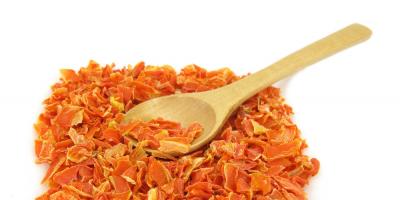When sawing wood, it is important to immediately calculate what the consumption will be, as this will affect the cost of lumber. Exit finished products may be different. It all depends on the quality of the wood used and whether measures are taken to optimize cutting. There are special measures to increase work efficiency, make the output better, and the quality of sawing higher. Before sawing, you need to pre-calculate everything. It's not as difficult as it might seem, but it costs round timber will be optimal and beneficial for obtaining excellent results.
How to increase cutting efficiency
In order for the yield of lumber to be significant, it is necessary to use special measures to increase the efficiency of the process:
- The calculation should be carried out only when using special programs; manually it will have low results, and the percentage of defects will be high.
- The round timber must first be sorted so that processing is carried out correctly.
- For cutting it is necessary to use high quality equipment. Otherwise, the amount of waste will be large, and the quality of the resulting lumber will be low.
- It is best to cut wide lumber first; narrow lumber takes longer to process.
- It is not recommended to take long logs.
- Before work, you should set up the equipment.
The yield of finished lumber may vary. It must be remembered that at the first stage boards are obtained, then they are sorted. As a result, the percentage decreases even further, for example, for hardwood it can be only 10-20%.
How to optimize cutting

To increase the yield of lumber, the cutting process must be optimized. This applies primarily to those workpieces that have significant curvature. To cut a crooked round timber, you need to perform a number of steps:
- First, only suitable wood is selected for work. If the remaining logs have rot, sprouts, or cracks at the ends, then it is necessary to trim off some areas.
- If a rotten core is discovered during work, you can carefully remove it, and then saw the remaining part. This will allow you to avoid large losses and obtain boards with a length of 1 m or more with the required quality.
- It is recommended to use logs with large diameter so that the yield percentage is higher. The coefficient can be 1.48-2.1, but it all depends on the diameter, quality of the round timber, sorting, and equipment. For frame shops this coefficient will be 1.48-1.6, and for lines with milling equipment— 1.6 for large forest. With a round log diameter of 12 cm or more, the coefficient can exceed 2.1.
Volume of waste after sawing
In order for the finished board to come out with a high percentage, everything must be prepared correctly, the work must be carried out only in accordance with the technology. Roundwood of coniferous and deciduous species produces different yields. In the latter case, the volume is smaller, even if special additional equipment is used. Needles are considered more convenient for sawing, since their trunk is straight and the log has a larger diameter. Coniferous forest is not so susceptible to rotting, so there is less waste. For hardwood, 2 cutting technologies are usually used:

- using a band sawmill on Z75, Z63;
- into collapse, when a half-beam is cut out in the core of the material and passed through a multi-saw machine.
The volume of a band sawmill is 40-50%. When using technology for collapse, the yield is different, it can be increased up to 70%, but the costs of such work are higher. If you cut round timber, the length of which is 3 m, you can see that the percentage of scrap is quite large, and the remaining material requires processing. This applies to the bulk with boards 22x105(110, 115)x3000 mm. There are many options for such a marriage. For example, it could be a wormhole, which is no longer suitable for most jobs.
After sorting, the volume of hardwood material, which belongs to grade 0-2, will be only 20-30% of the amount obtained after sawing. This means that of the total mass of harvested round timber, the yield of normal boards will be only 10-20%. The remaining materials are mainly used for firewood. For coniferous round timber, the yield will be different, but attention must be paid to what average values of the resulting volume are observed.
Lumber output
In order for the yield of lumber to be optimal, numerous conditions must be taken into account. To calculate correctly, you can consider the example of round timber yield. The data was obtained from the real experience of specialists and from the performance of sawmills. This makes it possible to compare percentages and calculate optimal average numbers.
U coniferous species the following output is possible:

- For unedged boards and other unedged materials during sawing, the yield will be 70%. This is the amount of material obtained during processing, the amount of waste will be equal to 30%.
- For edged material, when using sawmills of 63, 65, 75, there will be a lower yield of lumber, only around 45%. For band sawmills, the yield is usually up to 55-60% finished material. If you use means to increase efficiency, you can reach 70%, although this requires extensive experience.
- From a circular sawmill you can get lumber in the amount of 70-75%, although using methods to increase efficiency it may well be 80-75%. But work experience is required.
According to GOST 8486-86, for grade 0-3, the yield percentage, not taking into account sorting, is approximately 70%.
Another 30% can be left for rejecting the finished material. The rejected material is not thrown away; it is used for the manufacture of other types of lumber, which allow for the presence of certain defects.
For deciduous roundwood, a different yield percentage is observed:
- For unedged material – 60%.
- For edged wood - up to 35-40%, since the curvature of the original deciduous wood is usually large.
The output can be increased; additional equipment is used for this. This can be a special multi-sawing machine, an edge trimming machine, or a slab machine. In this case, the yield of lumber will increase by about 20%. The given percentage is given based on data on obtaining boards of grade 0-4. When sorting grades 0-1, the percentage of lumber obtained is 10%. To get a cube of finished edged hardwood material, you need to cut 10 cubes of the original round wood.
The yield of lumber from roundwood may vary. It all depends on the original type of wood used by the sawmill. Special measures to increase efficiency allow you to get a larger percentage than is possible, but for this you must have some experience.
New visitor
Registered visitor
Detailed description functions of log cutting programs. We offer you an assistant who will increase the wood yield by 10-15%, and speed up the process of preparing cutting sheets by 500-700%.

Pi2 program for cutting logs into boards of the same specified width and thickness.
Running Pi2 gives the following result:1. Technological maps cutting logs.
2. Increased sawing productivity by 10-15%.
3. Reducing the dependence of productivity and cutting quality on the human factor.
“Reverse” calculations are possible: the user specifies only the dimensions of the board, and the program suggests (calculates) minimum size logs needed to produce this board. You can sort the logs based on the size of the boards.
To choose the best cutting (highest yield), perform many calculations. The calculation report is presented in Excel. It is convenient to import data into your accounting system.
Pitago (Pitago) - a smart assistant engineer...
Wane point* is the distance in meters from the thick end of the log, starting from which wane appears in the direction of the thin end due to the convergence of the logs.
Pitago is a completely online solution, you can use it on any device, including Cell phones and tablets.
All photos from the article
In this article we will talk about how to cut logs on band sawmill. In addition, we will consider what are the criteria for selecting one or another method of wood processing and how this affects the characteristics of the finished lumber.
Methods for cutting logs to produce various lumber have been developed and improved for a long time, since this is the only opportunity to obtain from a single tree trunk edged board, timber and other categories of similar products.

From ancient times to the present day, methods of wood processing have evolved, and in addition, new, more productive equipment has appeared that makes it possible to obtain the necessary lumber quickly and efficiently. minimum quantity industrial waste.
Features of wood processing
The instructions for processing raw materials and obtaining lumber products consist of a number of technological operations, including longitudinal cutting of logs, trimming lumber and cutting to width, sorting by standard sizes, sorting by quality of workmanship, drying and storage.
Each of the listed stages is important from a quality point of view finished products. But cutting is the most labor-intensive and critical stage, during which the main characteristics of the finished lumber are formed.
Drawing up a plan for cutting logs into lumber (choice suitable method processing) depends on the type of wood, the size of the raw material, the degree of humidity, the density and hardness and many other factors. Of course, the method of processing raw materials is determined to a large extent based on the level of technical equipment of the enterprise.
Let's consider what equipment is used for industrial sawing of wood and what methods are relevant for each category of this equipment.
Cutting equipment and features of its use
The following categories of equipment are used for longitudinal cutting of logs:
- Single band saws or circular saws are a traditional solution that has been used for a long time.
- The group of frame saws is a more progressive solution that can significantly increase the productivity of raw material processing without compromising the quality of the finished product.
Let us consider in more detail the features of the application of the listed categories of equipment.
- Individual cutting is a method that uses single saws. In this case, only one cut can be obtained in one saw pass. Therefore, the entire tree trunk can be cut in several passes.
Important: The advantage of individual cutting is the independence of each subsequent cut from the previous one.
That is, sawing can be carried out in different planes.
As a result, it becomes possible to use certain properties more rationally different parts logs
At the same time, this method is low-productivity and therefore not suitable for use in large woodworking enterprises.
- Group sawing- This technological process, during which a group of frame saws is used.
The advantage of this method is that the log is completely cut in one pass. This saves time and, as a result, reduces the cost of production. But you need to remember that group sawing is performed in one plane.
Today, the following categories of equipment for group sawing are most widespread:
- narrow-clearance vertical frames, machines with circular saws, milling saws (diameter of processed raw materials from 14 to 22 cm).
- medium-clearance vertical frames (diameter from 24 to 48 cm)
- wide-clearance vertical frames, double and quadruple units band saw type(diameter of processed raw materials over 50 cm).
The SawsOptimization program is designed for sawmill technologists and planners and is a tool for optimizing sawmilling and achieving maximum yield. The program has convenient and flexible settings and an intuitive interface, which makes it much easier to master the program and further work with it.
The initial data for the program are:
Log dimensions
· Required dimensions of lumber and their cost.
· Characteristics of sawmill equipment.
The basic functionality of the program is to calculate optimal deliveries based on these data. The program produces deliveries that can be implemented on this equipment and provide maximum yield or maximum cost of products, allows you to calculate the amount of ash content of boards, the volume and cost of the finished product.
By registering on our website, you can download a demo version of the program in the “Documentation and Support” section.
What's new in version 3.0
The SawsOptimization program, previous version 2.3, is well known to many sawmills and has gained wide popularity in Russia. Users of SawsOptimization2.3 will find the following improvements in the new version of the program:
· advanced options for customizing sawing profiles and equipment settings, including: additional settings for sawing, profiling machines, saws and cutters, additional equipment profiles (Carousel, Linck, SAB, 3-pass sawing), dependence of saw width on cut thickness.
· Special sawing modes: coreless board, sawing with a fixed thickness of the outer side boards, sawing material with a false core.
· The improved optimization engine in some cases produces better results.
· expanded capabilities for operations with staves: manual creation and editing, saving and reading, application of an arbitrary stave to a log of arbitrary sizes, selection of the optimal diameter for the stave.
· Automatic calculation of saw dimensions depending on final humidity according to GOST 6782-1.75
In addition to the basic version, there is version 3.0 Professional, designed to optimize the sawmill cycle starting with log sorting at large enterprises and has, in addition to the above, the following additional functionality:
· Planner functionality: group optimization for logs of different diameters, general specification of output for the entire volume of sawlogs, planning and optimization to obtain the required output by section.
Curvature optimized
· optimization of sorting logs into deliveries to obtain maximum output products.
· integration with the OptiGrade log sorting optimization program
Brief description of the program's capabilities SawsOptimization Professional:
- Batch optimization for all diameters, with calculation of optimal supplies for each diameter, total yield of lumber and yield by sections.

- Possibility of optimization to achieve the required cross-sectional output.
Example: it is required to optimally obtain a yield of a section 32x150 of at least 10%. We achieve this, while the overall yield drops from 52.24% to 51.83%.


- Automatic optimization of sortgroup boundaries, as well as the ability to change boundaries manually and see how changing boundaries affects the output.
Example: changing the boundaries of variety groups increased the yield to 52.66%

- The ability to choose an alternative supply for any variety group and see how a change in supply will affect the overall yield.

- Taking into account the presence of a cutting optimization system edge trimmer. Different variants width of side boards in one set.

Distribution of raw materials by diameter: the ability to either specify the remaining raw materials in the warehouse by diameter in pieces, or use statistical distribution based on log sorting data. Taking into account all dimensional factors (diameter, run-off) when calculating the overall yield.

- Detailed configuration of equipment profiles, the ability to set different profiles for different diameters.








